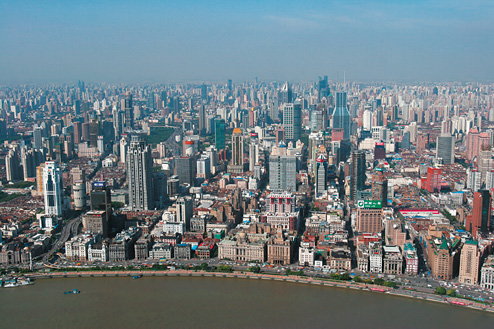Population
According to China’s last official census in 2000, the Shanghai metropolitan area is home to 16.74 million residents. Current estimates put it somewhere in the 20-21 million range, placing Shanghai behind only Mexico City, Tokyo, Sao Paulo and New York. The city’s booming economy has been acting like a magnet, drawing in migrant workers from other regions of China and from overseas. The previous official census in 1990 reported a population of 13.34 million, which correlates to a 25% increase in 10 years.
China’s one-child policy has had a huge impact on Shanghai’s birth rate; at just over 6 per 1,000 population, it has more than halved since 1985’s 12.74 per 1,000, and is dramatically lower than the 40 per 1,000 level of the 1950s, when the first forms of the policy were enacted. Statistics suggest, however, that the period from 2006 to 2015 will prove to be a mini baby-boom in Shanghai, sparked largely by the higher number of babies born to the growing migrant families. In 2007, the auspicious Year of the Pig, there were 160,000 births in Shanghai, an increase of 20% from the year before. Currently, the national birth rate is closer to 12.4 per 1,000. The average size of family households is the lowest in Shanghai, at 2.7 people per household, compared with the national average of 3.44. Shanghai’s resident population comprises of 49.2% men and 50.8% women; the average life expectancy for men is 78 and 82 for women. By the end of 2006, there were registered expats from 133 countries living and working in Shanghai, of which 70% worked in foreign or joint-venture companies.
China’s one-child policy has had a huge impact on Shanghai’s birth rate; at just over 6 per 1,000 population, it has more than halved since 1985’s 12.74 per 1,000, and is dramatically lower than the 40 per 1,000 level of the 1950s, when the first forms of the policy were enacted. Statistics suggest, however, that the period from 2006 to 2015 will prove to be a mini baby-boom in Shanghai, sparked largely by the higher number of babies born to the growing migrant families. In 2007, the auspicious Year of the Pig, there were 160,000 births in Shanghai, an increase of 20% from the year before. Currently, the national birth rate is closer to 12.4 per 1,000. The average size of family households is the lowest in Shanghai, at 2.7 people per household, compared with the national average of 3.44. Shanghai’s resident population comprises of 49.2% men and 50.8% women; the average life expectancy for men is 78 and 82 for women. By the end of 2006, there were registered expats from 133 countries living and working in Shanghai, of which 70% worked in foreign or joint-venture companies.













